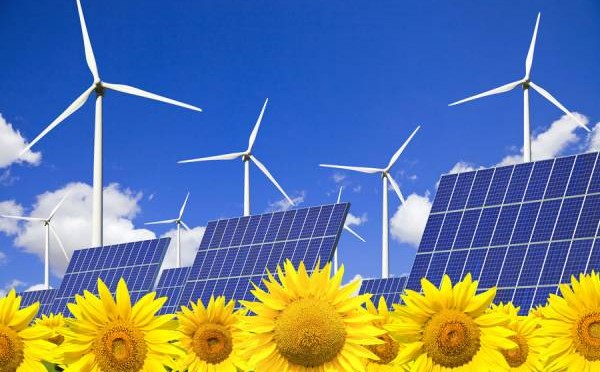The next decade and a half will see renewable energy raise its share of European electricity generation capacity from 40% in 2012, to 60% in 2030, while the share of fossil-fuel sources such as coal and gas falls from 48% to 27%, according to a major report from research company Bloomberg New Energy Finance.
The report, BNEF 2030 Market Outlook, based on modelling of electricity market supply and demand, technology cost evolution and policy development in individual countries and regions, forecasts that 557 GW of new renewable power capacity will come online in Europe by 2030.
In the same period, coal-fired capacity will shrink from 195 GW to 125 GW, as emission regulations bite and the cost-of-generation comparison shifts in favour of renewables, while gas-fired capacity increases but only modestly, from 257 GW to 280 GW.
Europe to invest nearly USD 1 trillion to increase its renewables capacity by 2030
Seb Henbest, head of Europe, Middle East and Africa for Bloomberg New Energy Finance, said: “Our research shows that further improvements in the economics of solar and wind will mean they are increasingly installed without subsidy in the years ahead. We expect Europe to invest nearly USD 1 trillion to increase its renewables capacity by 2030, with rooftop PV accounting for USD 339 billion and onshore wind USD 250 billion.”
Growing cost advantage of wind and solar
“Our model suggests that power demand in Europe will increase by only 9% between 2014 and 2030, as energy efficiency improvements take effect. This, and the growing cost advantage of wind and solar, will enable the continent to cut its power sector emissions from 1.3bn tonnes of CO2 in 2013 to 564m tonnes in 2030,” Henbest added.
Germany to invest USD 171 billion in renewable generation, with small-scale solar taking USD 69 billion of that
As far as individual countries are concerned, Germany is expected to see USD 171 billion of investment in generation, with small-scale solar taking USD 69 billion of that, offshore wind USD 70 billion and onshore wind USD 18 billion. The UK is forecast to invest USD 197 billion, with offshore wind taking USD 89 billion of that, small-scale solar USD 49 billion and gas-fired capacity – installed partly for balancing purposes – taking USD 8 billion.
USD 5.1 trillion to be spent globally on renewables
Globally, Bloomberg New Energy Finance expects USD 7.7 trillion to be invested in new generating capacity by 2030, with 66% of that going on renewable technologies including hydro. Out of the USD 5.1 trillion to be spent on renewables, Asia-Pacific will account for USD 2.5 trillion, the Americas USD 816bn, Europe USD 967bn and the rest of the world including Middle East and Africa USD 818bn.
Fossil fuels will retain the biggest share of power generation by 2030 at 44%, albeit down from 64% in 2013. Some 1,073 GW of new coal, gas and oil capacity worldwide will be added over the next 16 years, excluding replacement plant. The vast majority will be in developing countries seeking to meet the increased power demand that comes with industrialisation, and also to balance variable generation sources such as wind and solar. Solar PV and wind will increase their combined share of global generation from 3% last year to 16% in 2030.
BNEF has a more bullish view of continuing cost reduction than other major forecasts
“This country-by-country, technology-by-technology forecast of power market investment is more bullish on renewable energy’s future share of total generation than some of the other major forecasts, largely because we have a more bullish view of continuing cost reductions,” says
Michael Liebreich, chairman of the advisory board for Bloomberg New Energy Finance.
“What we are seeing is global CO2 emissions on track to stop growing by the end of next decade, with the peak only pushed back because of fast-growing developing countries, which continue adding fossil fuel capacity as well as renewables.”
More on the data and the methodology can be found here.


